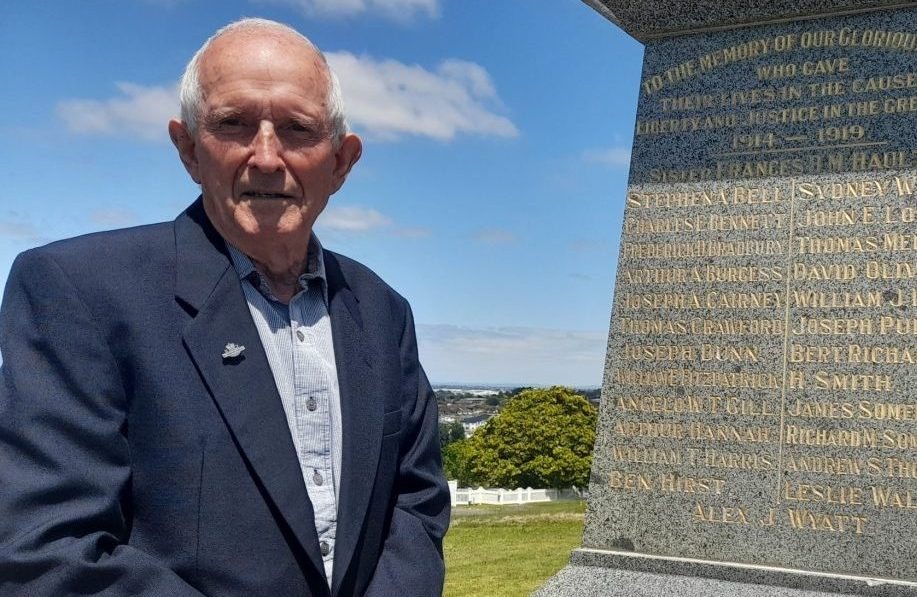|
Getting your Trinity Audio player ready...
|

The new president of the Howick Returned and Services Association talks to PJ TAYLOR about RSA activities and his life before taking up the role.
Where were you born and grew up?
Born in Whangarei at the end of WWII, and the family moved back to Hamiton before I started school. Grew up there and in sleepy Raglan where there was a family house and bach.
When did you join the New Zealand Army and why?
I joined the Army at 16 from the end of sixth form, heading to the Royal Military College Duntroon in Canberra for four years. I had enjoyed School Cadets and with plenty of sport and outdoor living and some family military background decided on a career as a Regular Force Army officer. My graduating class is gathering back in Canberra in December to mark 60 years since our graduation in December 1965.
How long did you serve in the NZ Defence Force and were there memorable deployments?
I had 15 years in the Regular Force. Within five months of graduating, and after some rapid training and exercising in New Zealand, I was deployed to the Republic of Vietnam, with about 24 other soldiers, and a couple of extra guns and Land Rovers, taking 161 Battery from four to six guns. I served there for 15 months in a variety of roles, including a period as Executive Officer of a US Artillery Battery, then running the gun group of 161 Battery for 11 months. We started with 173rd US Airborne Brigade and then joined the 1st Australian Task Force when it deployed. Apart from Vietnam, I had quite long deployments to Singapore and Malaysia, Thailand, and Australia. After my Regular service I spent time in the Territorial Force, and as Commanding Officer 16 Field Regiment, was closely involved in the re-equipment of the Regiment with guns, gun tractors and counter mortar radars. More recently, I held the Honorary role of Colonel Commandant of the Royal New Zealand Artillery from 2010 to 2017. This involved a couple of visits to South Korea and two to Australia, as well as plenty of work in New Zealand, and some in the UK.
You’ve been the new Howick RSA president for about six months. How is that going?
The team at the RSA is working hard to centre our activities around the welfare and support of veterans and servicepeople in our community. We’re also determined to protect the cash and investment assets that have come from the support of the people in the greater Howick region during the Howick RSA’s 92 years of existence. During the Covid period the organisation lost a lot of its membership base because the clubrooms in Wellington Street were closed. This led to zero income and the need to sell the hospitality site. The work we’re doing will see all our assets devoted to welfare activities in our region through three registered charities. Firstly, we look after returned veterans and their dependents who are in need, through our Poppy Trust. Our second welfare trust is the Community Trust which supports RSA members and the general community, providing help to anyone in need, and support for our youth through tertiary education scholarships and grants for youth development activities. The third charity is the Sale Street Trust which provides accommodation for those in need, particularly returned and servicepeople and their dependents. We’ve now also employed a specialist welfare officer and an administrative officer to help us achieve our aims, and we’ll have about nine times more welfare income to support the wider community. The RSA will continue to focus on civic commemorative activities such as Anzac Day. We’ll also continue to be very dependent on the generosity of the community in supporting us over the annual Poppy Day week. Our main drive now is for members. We’d be very pleased to talk to anyone in the community on the benefits of membership of our RSA.

You’ve signalled a change to the priorities of the Howick RSA, a focus on getting back to core business. How is that progressing?
The changes are going well so far, and we should meet the reorganisation and financial targets for the end of March that we set ourselves at our AGM. We have just agreed our next set of plans to be achieved by August this year, and for our activities after August. We’ll also work hard to meet both these sets of targets.
What did you do for a career once you left the Defence Force?
I joined Challenge Corporation in Wellington from Army General Staff and worked in HR and communications. My final role was heading the staff function and the communication/PR activities. After the merger of Challenge, Tasman Pulp and Paper, and Fletchers, I was the group personnel manager. I then took a six-month sabbatical in Europe with wife and kids and came back to Peat Marwick in Auckland as a management consultant before becoming self-employed as an owner in a management consultancy in Auckland for around 30 years. This work involved major consulting work across New Zealand and in Australia, Thailand and the Philippines, as well as in China, Japan and the UK.
Where are your favourite places in east Auckland and things to do?
I have to say the Village itself. It has character, history and great amenities, and only gets better by the year. The Howick region is also blessed with lovely beaches, hidden gems of bush, a great sense of citizenship and a lively and interesting population.
If there was one thing in New Zealand society you’d like changed, what would that be?
Make the rest of New Zealand like Howick.











